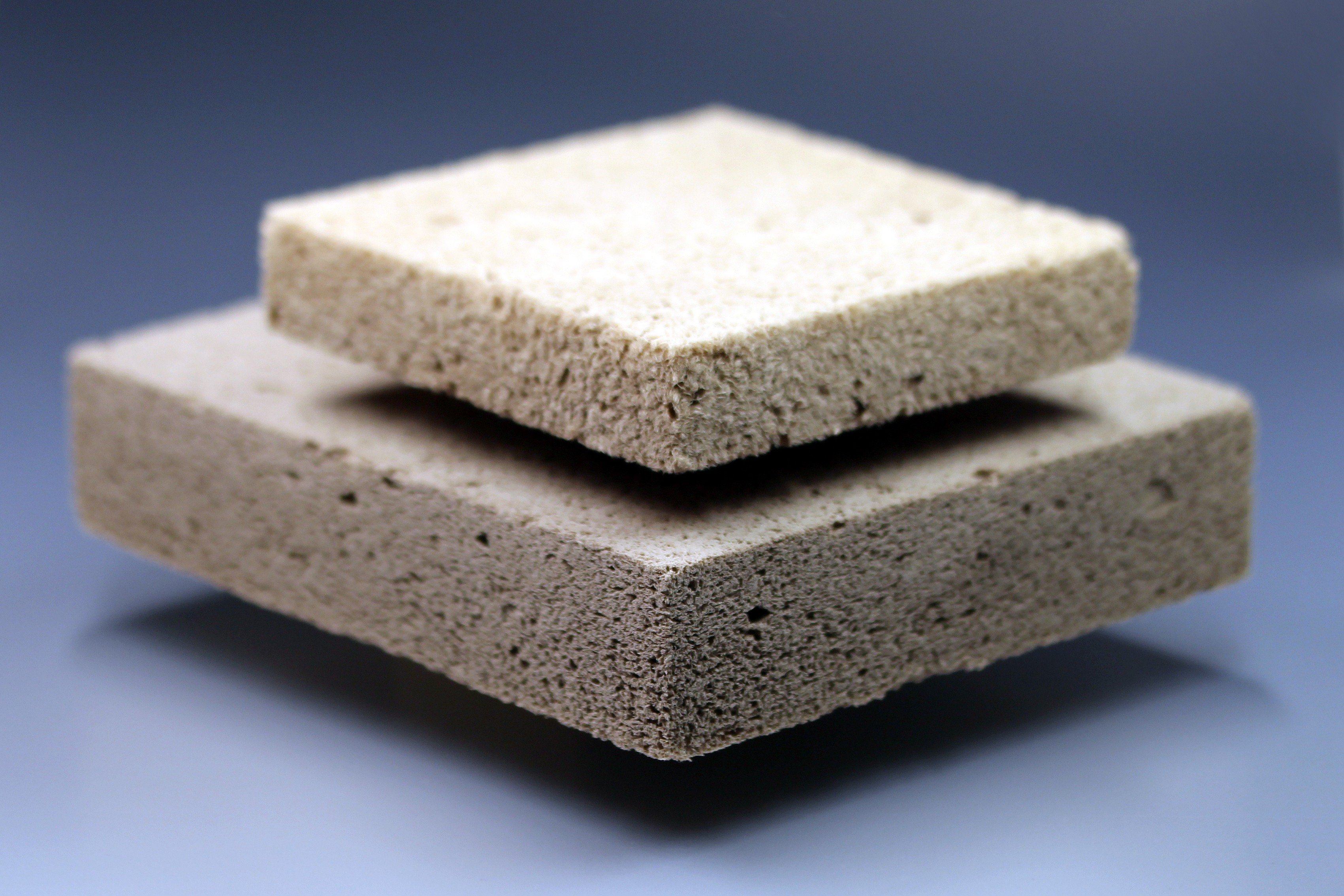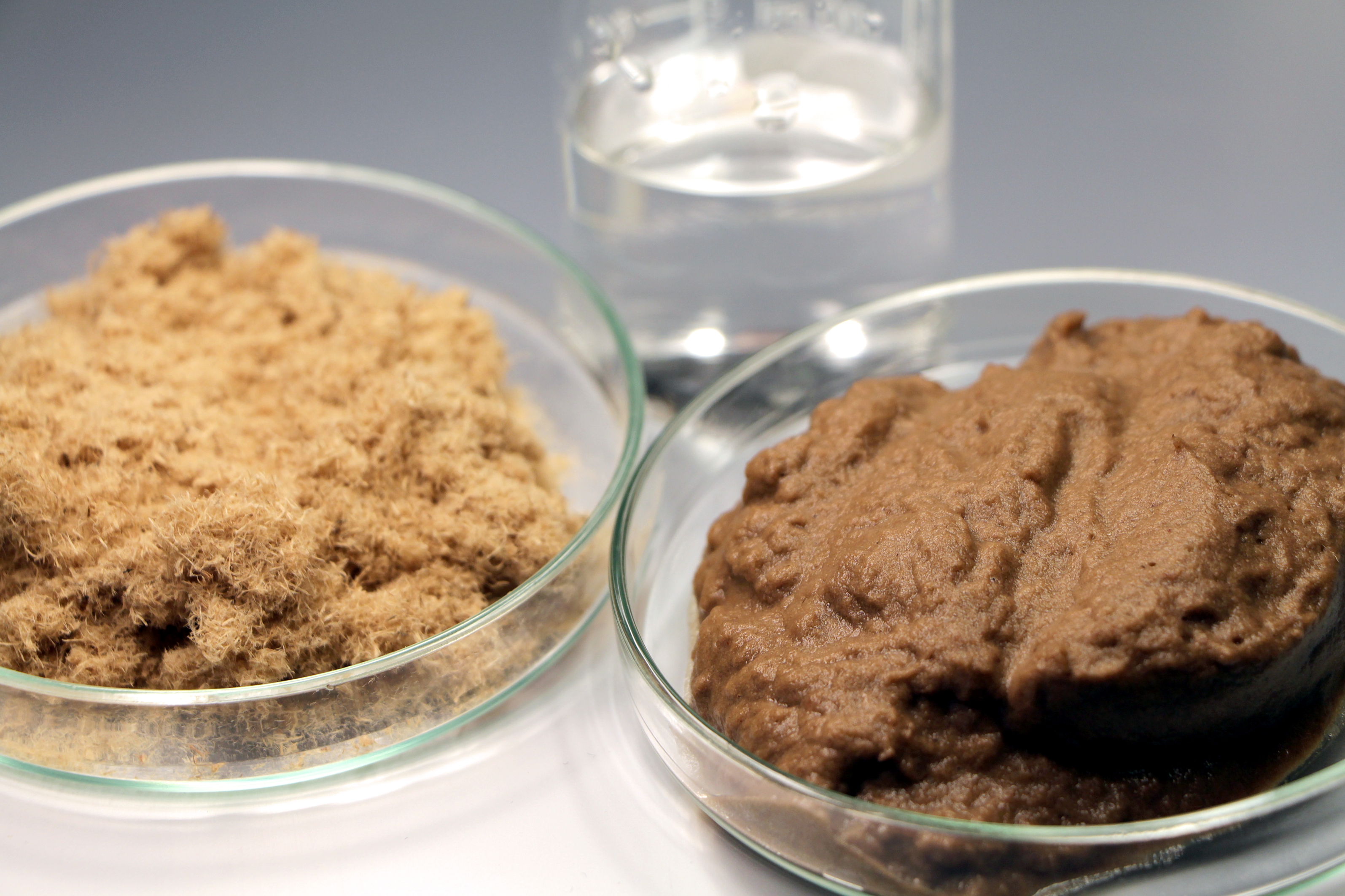

Foams are usually made of petrochemical-based polymers. Researchers at the Fraunhofer Institute for Wood Research WKI in Braunschweig (Brunswick) have developed a new foam material. It consists of 100 percent renewable resources, is climate friendly and recyclable. In the long term, wood foams could replace conventional petroleum-oil based foams, whether for thermal insulation, as packaging material or in lightweight construction.
Researchers at WKI are working on methods for manufacturing foam out of wood particles. In order to create this foam, the wood is first ground with a high water content to fine particles until a fiber suspension is obtained. This suspension can be chemically or physically foamed using internal or external gas producers such as CO2. The foamed suspension is then hardened in a drying chamber. The strength of the foam results from the wood´s own bonding forces, so that no synthetic adhesives are necessary and any possible health risks due to emissions from the adhesive are excluded. The result of the processing is a light base material with a porous, open-cell structure and low bulk density. Foams made of beech wood can, for example, be manufactured in a density range of 40 kg/m3 and 280 kg/m3. The material can be further processed as hard foam boards or as elastic foam and can be machined like wood materials, with hardly any dust formation. Furthermore, the wood foam is odor-neutral.
Wood foams are applicable as building insulation material. Some insulation material is already made of wood, but this has the disadvantage of being less dimensionally stable than insulation material made of polymers. The foam products have already been tested according to current standards for insulating products. Promising results were achieved with the thermal insulation as well as with the physical-technological properties. The compressive strength for 10 percent compression was 20 kPa to 190 kPa, depending on the density. The thermal conductivities also depend on the density. The values are below 0.04 W/mK and are therefore comparable with the values of polystyrene and wood fiber insulation panels. The thickness swelling is <1 percent after 24 hours of water storage and the foams remain dimensionally stable. The fire behavior is similar to that of natural fiber insulation materials. The materials burn and glow, and the flame partially extinguishes itself. Additives necessary for flame protection can be easily and efficiently mixed into the fiber materials during the manufacturing process. Furthermore, recycling of the wood foam is easily feasible and, after use as packaging, the material can be disposed of in the same way as waste paper.
Currently, the process technology is being optimized and the application of other lignocellulosic materials is also examined. In just a few years the large-scale industrial manufacture of wood products made of wood foam should be possible and established in the market.
The great potential of this innovative material is evidenced by the awards the wood foam has already received. The development was nominated in 2014 for the German Raw Materials Efficiency Prize and in 2015 won both the Interzum Award “Best of the Best” and the GreenTec Award in the category of “Building and Living”.
 Fraunhofer Group for Materials and Components - Materials
Fraunhofer Group for Materials and Components - Materials